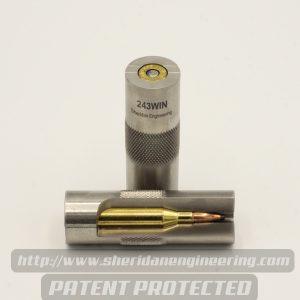slas
Well-Known Member
Been reloading, mainly for hunting, for around 8 years now and have slowly upgraded my equipment to make things easier but always working to improve the process. Here's my general step by step process but I would like to incorporate neck turning and expander mandrels instead of the sizing ball. I'm curious to see others step by step and at which point they incorporate the neck turning and expander mandrels in their processes. Also always interesting to see what tools are used in your processes, such as Chargemaster 1500 and/or other brands/types of tools. I realize mine is most likely lacking in many aspects to many of yours, but here's mine:
1 ) Visual check of once fired brass.
2) Deprime all with Lee universal deprimer.
3) Tumble brass in walnut shell media (I use lizard bedding from PetSmart)
I've thought about getting an ultrasonic cleaner but haven't been able to justify it.
4) Clean all media from brass.
5) Lubricate limited amount of brass, usually on a baking sheet, with one shot or RCBS case slick.
Question: I have imperial but how do most lubricate larger amounts at one time, and what lube do you prefer?
6 )Resize brass (with expander ball), either full or shoulder bump (mostly Redding or RCBS dies)
I've bought the mandrels so ready to incorporate. Also have seen question on trimming before resizing vs after?
7) Clean brass again, either individually or in media.
8) Measure cartridge lengths (Frankford digital calipers)
I also have a pair of Mitutoyo dial caliper but like the digital better.
9) With Frankford prep center, trim (if required), clean primer pockets, chamfer and deburr.
10) Set primers with hand priming tool.
Currently using a Lee and could probably use an upgrade here. Any suggestions?
11) With RCBS Chargemaster, calibrate, measure powder load out and fill cartridges.
The trick of the cut McDonalds straw in the end of the powder tube really helped on the accuracy.
12) Seat Bullets (various die here, some with micrometers others without).
13) Confirm proper OAL lengths.
1 ) Visual check of once fired brass.
2) Deprime all with Lee universal deprimer.
3) Tumble brass in walnut shell media (I use lizard bedding from PetSmart)
I've thought about getting an ultrasonic cleaner but haven't been able to justify it.
4) Clean all media from brass.
5) Lubricate limited amount of brass, usually on a baking sheet, with one shot or RCBS case slick.
Question: I have imperial but how do most lubricate larger amounts at one time, and what lube do you prefer?
6 )Resize brass (with expander ball), either full or shoulder bump (mostly Redding or RCBS dies)
I've bought the mandrels so ready to incorporate. Also have seen question on trimming before resizing vs after?
7) Clean brass again, either individually or in media.
8) Measure cartridge lengths (Frankford digital calipers)
I also have a pair of Mitutoyo dial caliper but like the digital better.
9) With Frankford prep center, trim (if required), clean primer pockets, chamfer and deburr.
10) Set primers with hand priming tool.
Currently using a Lee and could probably use an upgrade here. Any suggestions?
11) With RCBS Chargemaster, calibrate, measure powder load out and fill cartridges.
The trick of the cut McDonalds straw in the end of the powder tube really helped on the accuracy.
12) Seat Bullets (various die here, some with micrometers others without).
13) Confirm proper OAL lengths.

